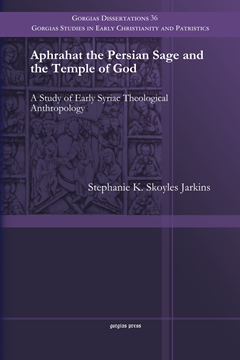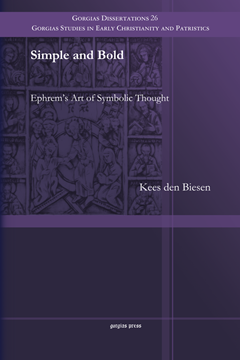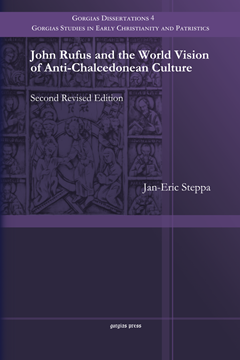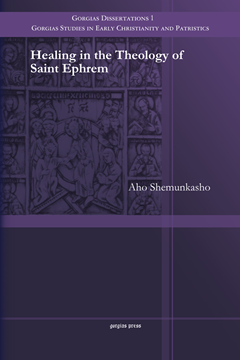The Mark of Cain and the Jews
Augustine’s Theology of Jews and Judaism
ISBN: 978-1-4632-0385-6
This book examines the development of Augustine of Hippo’s theology of the Jewish people and Judaism. Formulating a typological association between the biblical figure of Cain and the Jews, he crafts a highly intricate theology that justifies and even demands the continuing presence of Jews and their religious practices in a Christian society. Such a theology emerges out of his highly original interpretation of Genesis 4:1–15 and yet mirrors and theologically justifies the reality of Jews and Judaism in the late Roman Empire.
$81.00 (USD)
Aphrahat the Persian Sage and the Temple of God
A Study of Early Syriac Theological Anthropology
ISBN: 978-1-4632-0386-3
Aphrahat the Persian Sage, (fl. 337-345 C.E.), was a Syriac Christian author who wrote twenty-three treatises entitled The Demonstrations. This book examines “temple” as a key image for Aphrahat’s theological anthropology. The temple is central for both Jews and Christians; it is the place of sacrifice, meeting, and communication with the Divine. For Aphrahat, the devout Christian person may be a micro-temple which then allows one to encounter the divine both within oneself and through a vision ascent to the heavenly temple.
$91.00 (USD) $54.60 (USD)
St. Cyril of Alexandria, A New Testament Exegete
His Commentary on the Gospel of John
ISBN: 978-1-4632-0387-0
This study portrays Cyril of Alexandria as exegete and theologian through an examination of his Commentary on the Gospel John. It begins with an attempt to place Cyril and his commentary within their context. This work argues that Cyril wrote his Commentary on the Gospel of John early in his writing career, almost a decade before becoming bishop. Cyril’s commentary on the Johannine Gospel reveals his exegetical method and his strong Trinitarian theology. The commentary also focuses on the nature and work of the Holy Spirit: the indwelling of the Spirit is the beginning of the newness of life.
$117.00 (USD) $70.20 (USD)
Simple and Bold
Ephrem’s Art of Symbolic Thought
ISBN: 978-1-4632-0388-7
Ephrem the Syrian is known as one of the greatest Christian poets and as a unique author whose mode of thought is usually described as “symbolic.” In this work, Kees den Biesen explores the literary, intellectual, and theological mechanisms at work in Ephrem’s writings with the specific aim of identifying the exact nature of his “symbolic thought” and evaluating its contemporary relevance. Den Biesen elaborates a comprehensive approach that integrates a variety of methods into a genuinely theological methodology. He then proposes his own comprehensive understanding of the nature and merits of Ephrem’s symbolic thought.
$141.00 (USD) $84.60 (USD)
John Rufus and the World Vision of Anti-Chalcedonean Culture
Second Revised Edition
ISBN: 978-1-4632-0389-4
This book deals with the works of the anti-Chalcedonian hagiographer, John Rufus, and traces the basic motives behind the opposition against the council of Chalcedon in the fifth century through an attempt to reconstruct a specific anti-Chalcedonian culture. As part of the eastern monastic culture, it considered itself a counter-culture guarding purity of ascetic conduct and orthodoxy from being defiled by the perverseness of the majority. Reading John Rufus' hagiography, we find ourselves in the midst of a cosmological warfare between good and evil, where the great heroes of the anti-Chalcedonian movement enter into history as God's warriors against the rebellion of demons and heretics.
$85.00 (USD)
Healing in the Theology of Saint Ephrem
ISBN: 978-1-4632-0390-0
Ephrem, the most celebrated writer of the Syriac Church, presents a wide range of theological themes and images that are characteristic of fourth-century Syrian Christianity. A significant theme that no one has yet studied in Ephrem is the concept of sickness and healing. This book presents the significance of healing theology and the ways in which the healing of man - spiritually, mentally, and corporally - is highly valued by Ephrem. The main part of the book deals with the causes of spiritual sickness and the process of healing, and the way in which Ephrem places them in the divine history of salvation.
$151.00 (USD)





